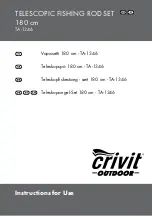
Test of the charging system
The current output of generators is speed-dependent.
Generator power output example
Idle running
12,5 Amps
from 1.500 RPM
70,8 Amps
from 2.000 RPM
91,7 Amps
from 5.000 RPM
108,3 Amps
It becomes transparent that a sufficient power generation for additional loads is available
from 2000 RPM upwards.
If in idle running (stop and go, traffic jam) situation loads as rear-window-defroster,
fans, lighting system, infotainment system etc. are switched on - the consumed energy
is higher than the produced energy. This means that power will be consumed directly
from the battery.
The voltage produced by the power generator is limited (from manufacturer) between
13,6 and 14,4 Volts in order to avoid battery overloading.
Note: Some manufacturers limit at a higher voltage (15Volts).
If the generated voltage at 1.500 to 2000 RPM (and all loads off) is lower than 13,6 V,
a defect on the generator is possible.
Under these conditions it is not possible to charge the battery sufficiently.
Test procedure of the charging system
1) Connect the unit to battery (do not press the load switch).
2) Start the engine (Set 1500 to 2000 RPM).
3) Read the indication instrument. If the indication is 13,6 to 14,4 Volts the charging
system is working properly.
If the indication is below 13,6 or higher than 14,4, the charging system is not
functioning properly.
º
Look for fault.
4) Switch on the high current consumers as light, fans, rear-window-
defroster, etc. The indicator should not drop considerably.
5) Switch off the high current consumers. The indicator should return to the
same position as 3).
GB





























